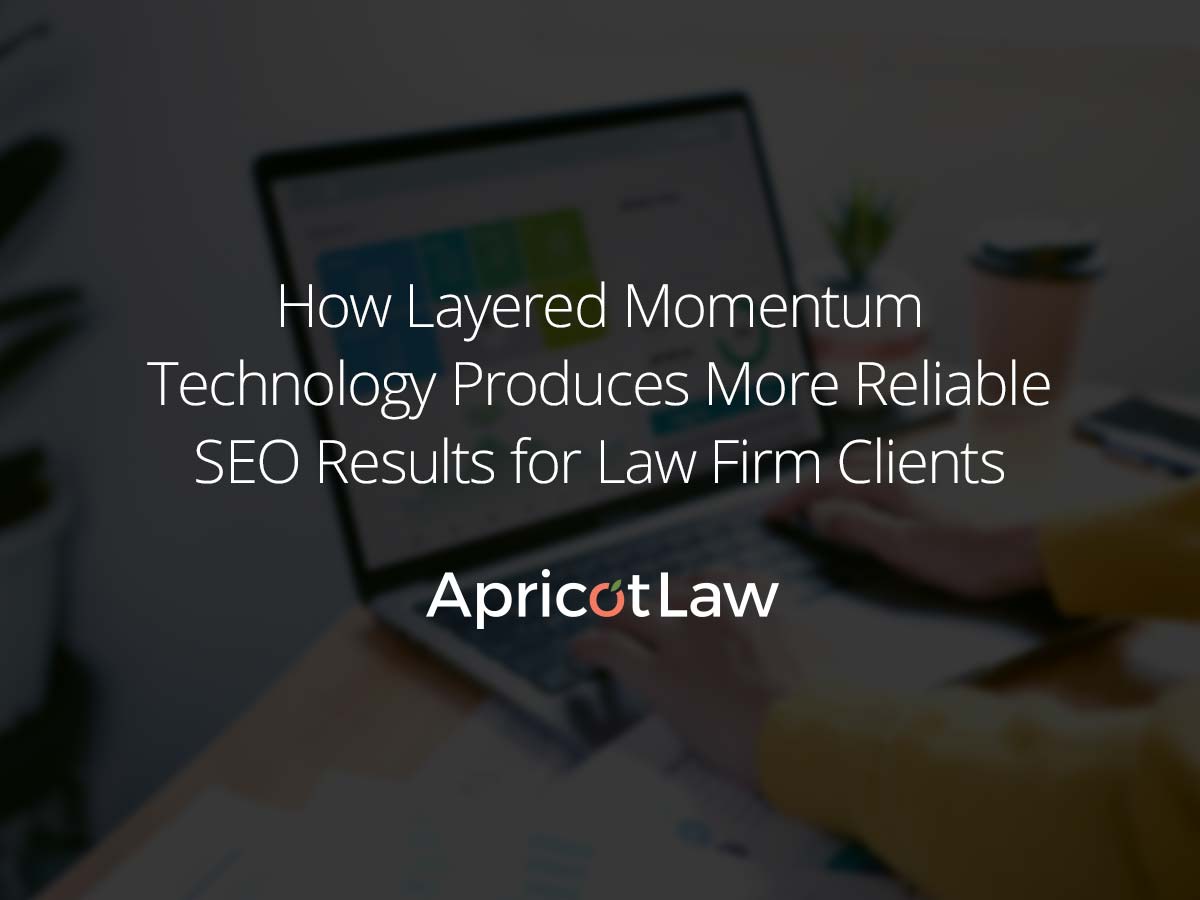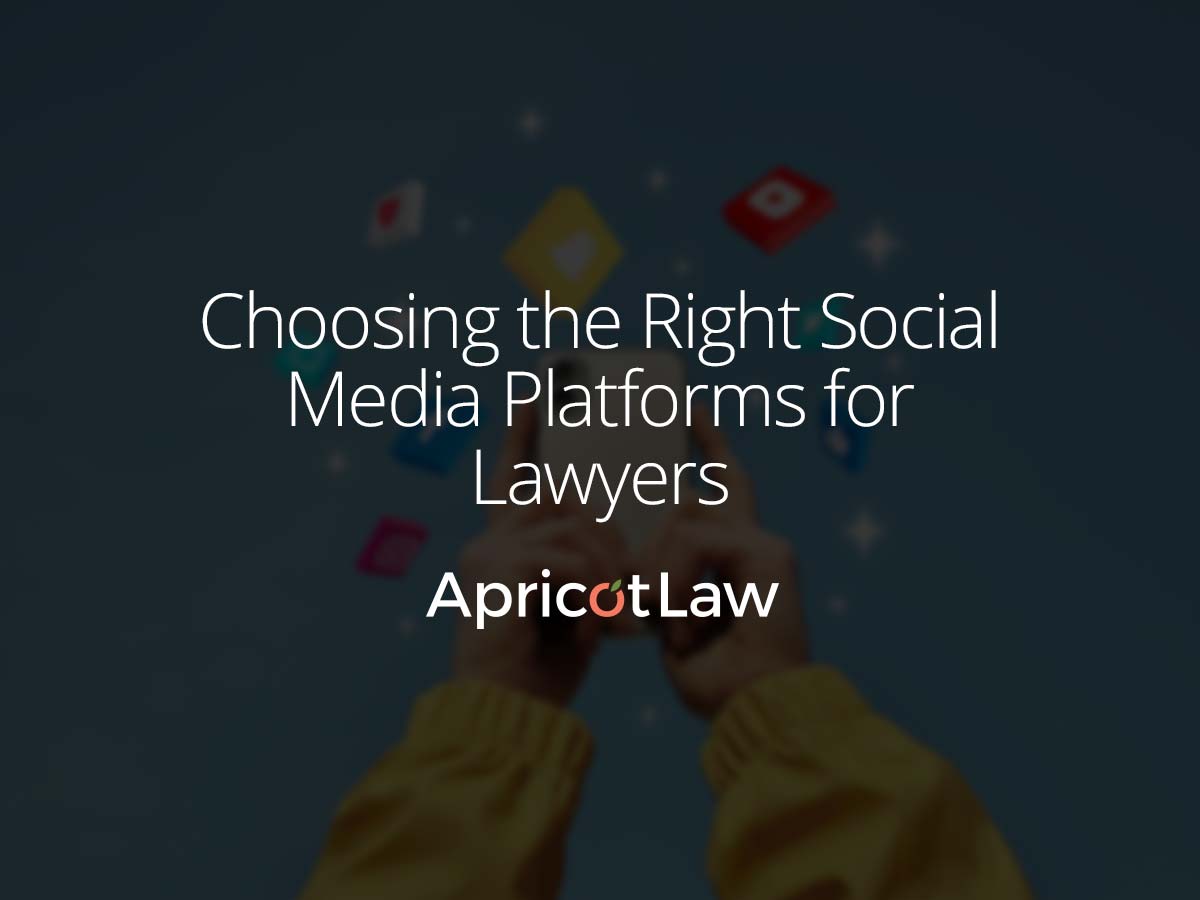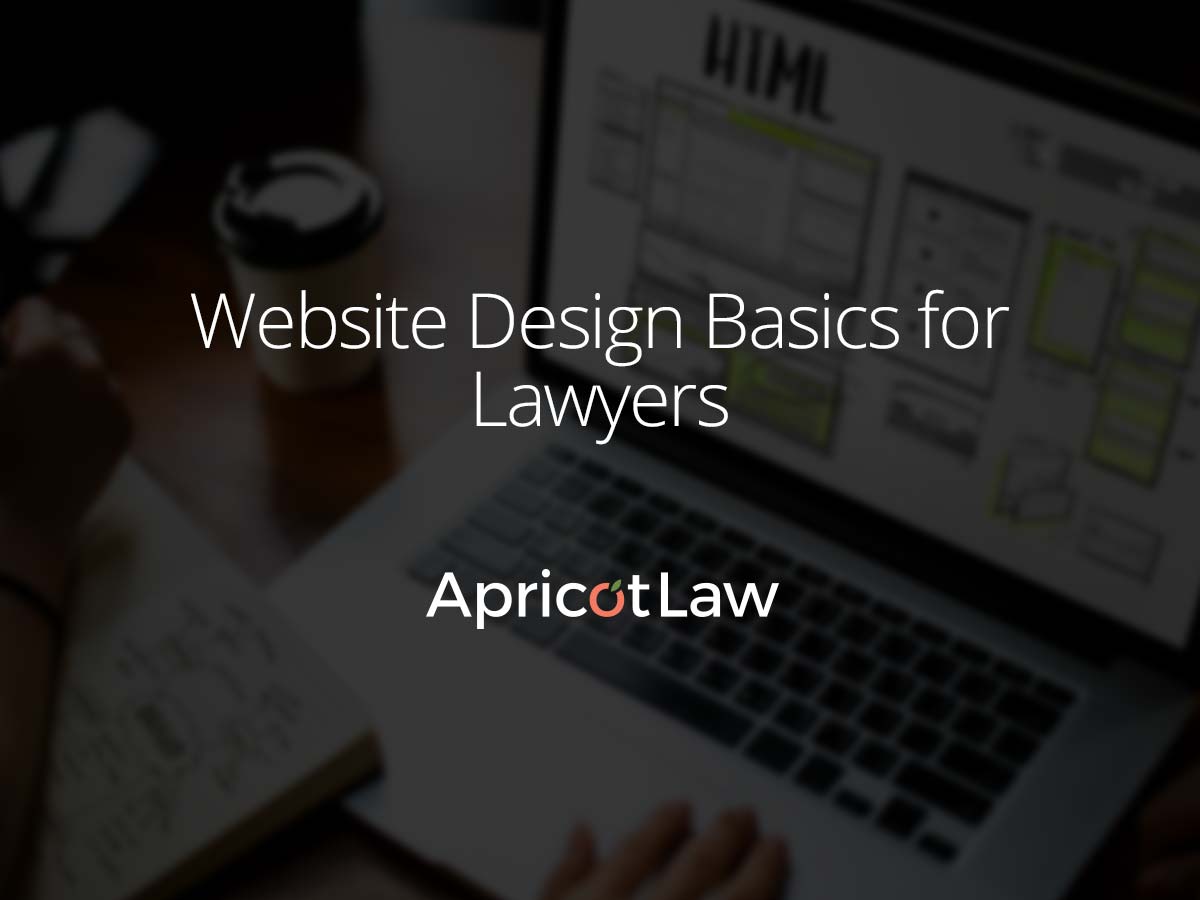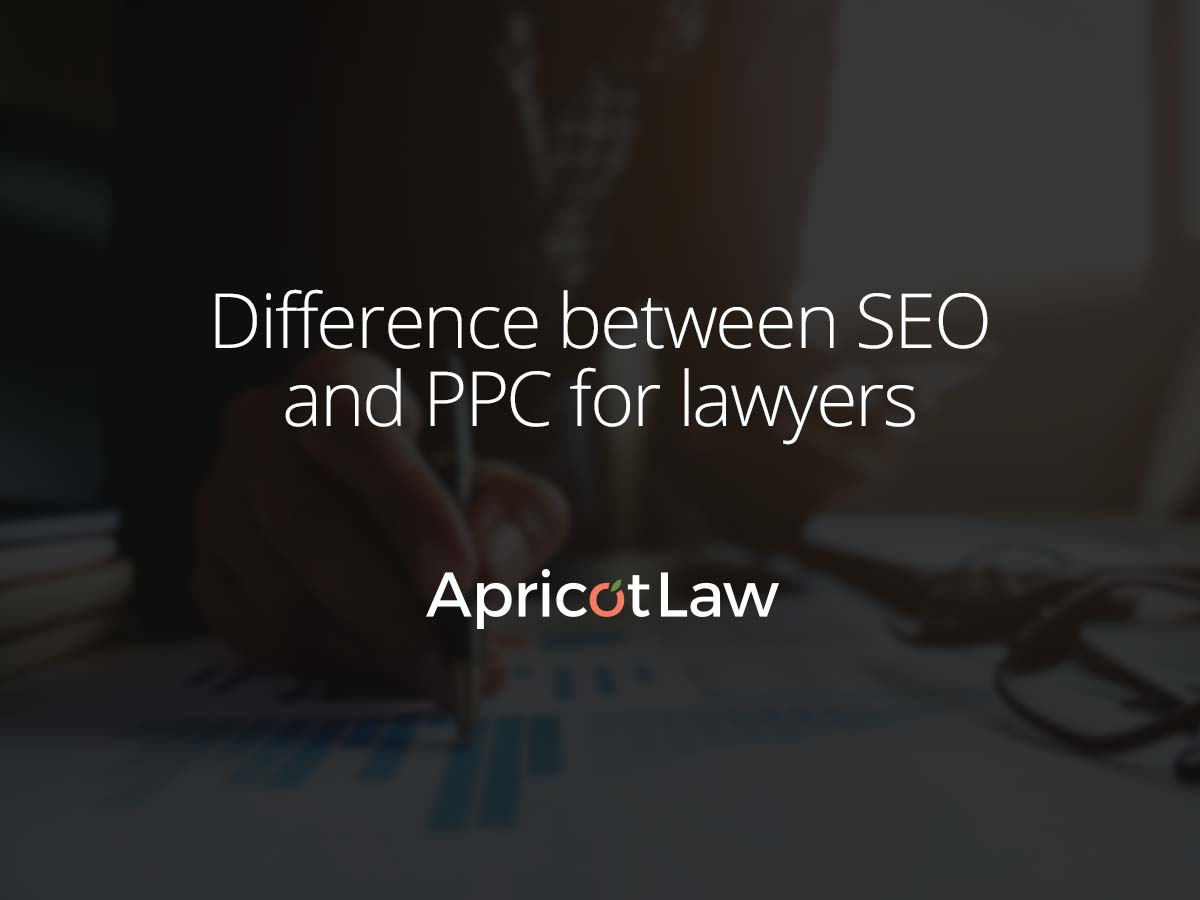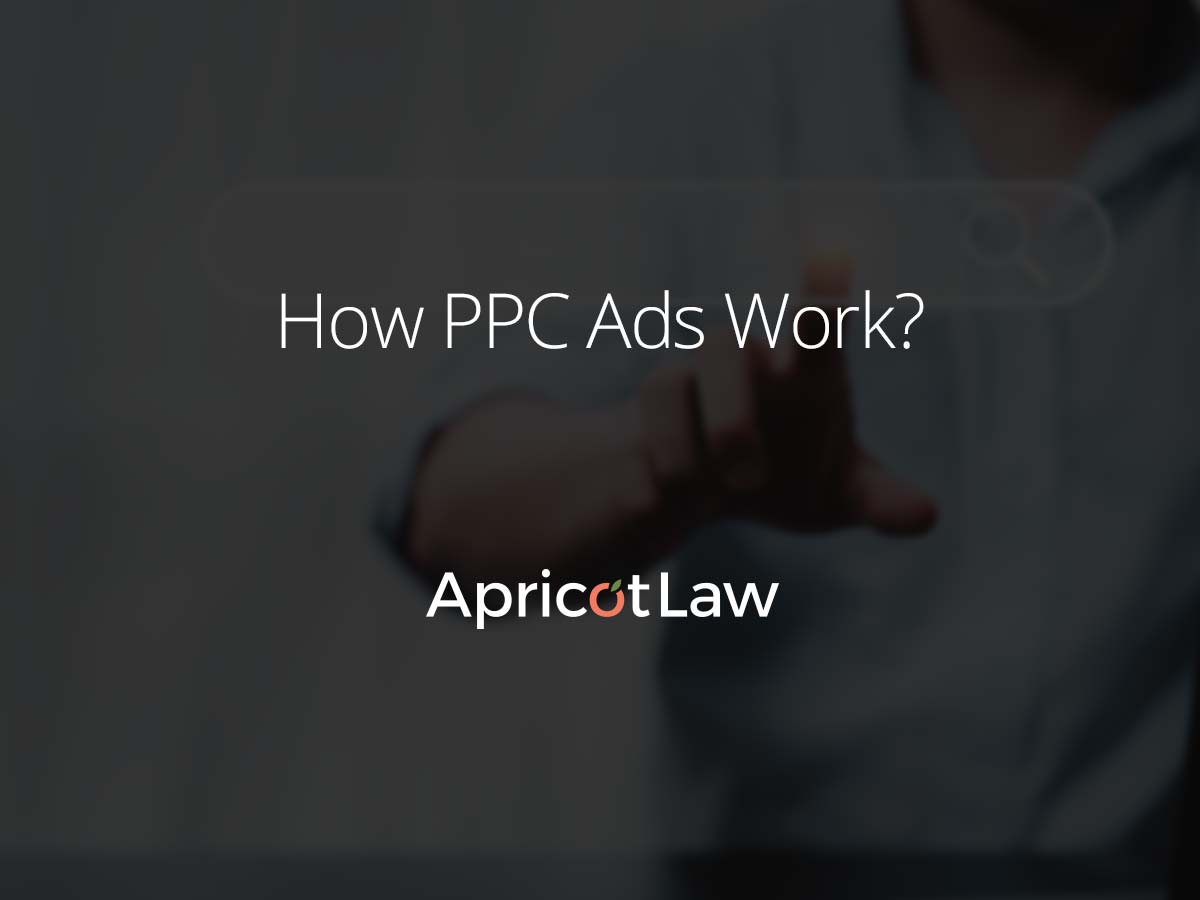Are you frustrated with a lack of results or inconsistent results from your marketing efforts? Are you fed up with generalist agencies promising you the same results but failing to deliver?
Have you been dying to rank for big terms like “car accident lawyer, “DUI lawyer,” or “divorce lawyer” only to be frustrated by slow, barely noticeable upward movement month after month?
Is your law firm open to partnering with a legal specialized agency who’ll implement a new and different way for you to dominate your local area, rank for the top searched terms your most ideal clients are searching for and generate a more consistent flow of qualified leads and cases for your practice?
If you answered yes to any of these questions, then I’m quite confident we at ApricotLaw can help you generate more qualified leads and cases using Layered Momentum Technology.
What is Layered Momentum Technology, or LMT?
Layered Momentum Technology, or LMT as we call it, is very different from the common and outdated SEO and search marketing methods you’re likely familiar with because of how it stacks, layers and systemizes how you show up in the search engines and how you show up in the eyes of your most ideal clients.
Layered Momentum Technology is a four phase process that prioritizes, then layers the most advanced organic marketing strategies, specific to your firm’s size and goals.
It ensures you rank in search results for high value keywords, dominate maps & local listings, and stand out as the go-to solution for your most ideal clients and cases.
While traditional search marketing and SEO like link building, article writing and keyword stuffing are no longer as effective as they once were, and can actually land you in Google’s bad books, LMT simplifies your organic search marketing and works both in the short term and the long term, giving Google (and your prospective clients) exactly what they want, when they want it.
Traditional SEO Versus ApricotLaw’s Proprietary Layered Momentum Technology
The reason traditional SEO doesn’t work is because law firm’s target the biggest, most competitive search queries, oftentimes well before they have earned the right to do so.
Imagine signing a $250million personal injury case as your very first case a week after passing the BAR exam.
That sounds absurd, right?
But why does it sound absurd?
What needs to be in place before you can take on a huge case like this? Here are a few prerequisites that come to mind:
- Experience with similar clients and cases
- A staff you’ve developed over time
- Multiple experienced attorneys
- A network of outside professionals
- Relationships or a reputation with insurance companies
- Awards and certifications
Before these prerequisites are in place, if we’re being honest, you’d likely be doing this particular client a disservice by taking on their case.
Going after the biggest, most valuable keywords on the internet, is similar to this $250million example. Google is looking at your site as if you’re not ready to rank for these terms. You haven’t proven that you can handle these types of cases.
Google will show the firms and sites that it believes are equipped to solve the searcher’s problem. Showing a brand new attorney to someone that is looking for an experienced motor vehicle accident attorney to help with a catastrophic injury would be a disservice to the accident victim.
How Did ApricotLaw Discover Layered Momentum Technology?
Layered Momentum Technology was discovered through trial and error and out of necessity.
Every client that comes to us asking for help wants to rank in the top three of Google for the most valuable and most competitive terms in their market. In personal injury, that term is typically “[location] car accident lawyer.”
This makes perfect sense.
“[Location] car accident lawyer” will cost you hundreds of dollars per visitor in Google Ads. Of course, you’d love to have the same traffic find you organically, bypassing the astronomical PPC costs.
And these are people looking for a lawyer. You’re not flashing your banner ad at someone scrolling through their Instagram feed in bed at 10 o’clock at night. These are people looking for you. They have a very specific problem and they are “searching” for a solution.
That’s why search traffic is so expensive. Because it’s the best traffic you can get, hands down.
Traditional SEO says to build a page optimized for the term you’re targeting then to promote that page by getting other sites to link to it.
The problem with this approach is that it can take a year before Google will trust you enough to show that web page on the first page of its results.
Most clients are not willing to wait a year to see if something will work or not. It’s too much time and money to risk with very little feedback along the way.
We needed a way to provide immediate results as we built towards the biggest, most valuable terms in the market.
So we began to focus on less competitive but still extremely valuable terms at first. These are terms any site can rank for within a few months.
And focusing on these terms first starting bringing in new leads and cases for our clients in a relatively short period of time. Our clients were ecstatic. Proving that we could deliver cases fairly early on built trust between us.
To our surprise, we noticed that after a client’s site ranked for these more local and less competitive terms, ranking for bigger and bigger terms came more quickly and easily than going after the bigger terms directly from the beginning.
And Layered Momentum Technology was born.
How Does Layered Momentum Technology Work?
Layered Momentum Technology starts with a foundation of EEAT – Experience, Expertise, Authoritativeness, Trustworthiness. EEAT was created by Google as part of how they evaluate and rank sites. EEAT is how they know which sites to trust and which sites will most likely solve the searcher’s problem and satisfy their query.
After the foundation has been laid down, we target valuable terms that are not being targeted by every other firm in your market. These keywords are only searched a few dozen times per month but they still attract ideal clients to you.
Once LMT Layer 1 has been set, we move on to slightly more competitive terms. Now that you have proven yourself to Google with Layer 1, Google is more willing to send you visitors for Layer 2 terms.
Finally, once the LMT Foundation, Layer 1 and Layer 2 are in place, now is the time to target the most valuable terms in the market. The prerequisites you put together up to this point will be your ticket to the big leagues.
Let’s cover each LMT Layer in more detail.
Laying the Foundation for Layered Momentum Technology
The first step is to lay the foundation with Google EEAT. We accomplish this by building web pages for all of our target keywords, optimizing your Google Business Profile, building hundreds of directory profiles and listings and installing a review-getting process at your law firm.
With these elements in place, Google starts to look at you as a real law firm.
Results from only Laying the Foundation can be pretty immediate just like they were for our client Rozas Injury Law in Baton Rouge, Louisiana.
They started seeing results from their foundation within the first 90 days, generating qualified calls from personal injury related search terms. They went from an average of 3 calls per month, all the way to 35 calls per month on average, and still climbing. AND the most popular term generating these calls was Truck Accident Lawyer, their favorite type of case.
Layer 1 of Layered Momentum Technology
Once the foundation is set, we can now put down Layer 1 of LMT.
Layer 1 of LMT builds on Laying the Foundation and capitalizes on lower competition yet highly valuable phrases and builds further trust with Google and the other search engines.
We do this by optimizing the target page, building a dozen supporting pages all interlinked properly and by getting other sites to link to all of the pages in the “silo.”
Results from Layer 1 can be dramatic just like they were for our client Lewis and Associates in Dallas, Texas.
After implementing Layer 1, and Google started trusting their site, we started promoting the term Dallas Wrongful Death Lawyer. This term ranked fairly quickly, because these layers were put down in the correct sequence. And they just signed a huge wrongful death case that will be worth over $1m to their firm. Now we’re implementing the 2nd phase for them building on their incredible results even further.
Layer 2 of Layered Momentum Technology
Layer 2 of LMT is where we leverage and target even higher value and slightly more competitive keywords.
For example, instead of targeting “Park Slope Motorcycle Accident Lawyer,” we can now go after similar case types in New York City as a whole.
Although the target keywords are changing from one layer to the next, the process for each layer remains the same – optimize the target page, build supporting pages around the target page interlinked properly and get other sites to link to the entire cluster.
We helped our client Greenstein and Milbauer with this exact approach and their results have been incredible.
The firm has been doing well for many VERY competitive terms like NYC Sexual Abuse Lawyer and NYC Wrongful Death Lawyer.
Layer 3 of Layered Momentum Technology
After the foundation is set, Layer 1 and Layer 2 have been built, we can now go after the most valuable and competitive terms in your market.
These keywords would normally be out of reach but since we’ve properly layered our approach, Google now sees your firm as the go to authority and it enables you to rank and show up for the most sought after terms like “car accident lawyer” and “personal injury lawyer” to name a few.
Trying to rank for these terms before the Foundation, Layer 1 and Layer 2 are in place will at best be a fruitless and frustrating exercise or, at worst, land you in Google’s bad books.
Once Layer 1 and 2 keywords are getting good, relevant traffic, Google is telling us that it trusts the site more. For Greenstein & Milbauer, this was our nod to move onto Layer 3 and to go after one of the most competitive terms in the entire country – “NYC Car Accident Lawyer.” This client has been ranking in the top three for this term for years and bringing in record cases year after year after year.
This is all possible because the foundation was solid, Layer 1 and 2 were in place, and the site was ready to handle big, meaty keywords that are incredibly valuable.
As mentioned, LMT prioritizes, then layers the most advanced organic marketing strategies, specific to your firm’s size and goals.
It ensures you rank in search results for high value keywords, dominate maps & local listings, and stand out as the go-to solution for your most ideal clients and cases.
And the results our clients are seeing from LMT are nothing short of incredible.
Invitation for Law Firm Owners Looking for a Better Way to Produce SEO Results
Now, if you want to position your law firm as the expert, the authority and the go-to law firm in your area, all while increasing the flow of leads and cases you’re getting from your digital marketing efforts, I’d love to share with you how we can make that possible.
Just below this video is a button where you can schedule a free 30 minute discovery consultation where we will walk you through what it would look like for us to implement Layered Momentum Technology in your law firm.
And as an extra gift for booking your free consultation, we’ll also send you a physical copy of SEO For Law Firms so you can have it on hand if needed and even share it with your team.
On this call, we are going to do three things:
Number one we are going to have a look at what exactly your goals are, what you want and need to be achieving from your organic search marketing efforts.
Next, we’ll take a look at your current digital marketing approach and examine where the quick wins are for your law firm. You may have some of the right pieces in place that could be helping you that just need some fine tuning..
Lastly, we will look at what needs to be done to implement LMT specific for your law firm. We will map out an action plan of exactly what we would do to implement LMT for you, what the investment is and what potential timelines for results could be.
You are going to leave this call clear, confident, and excited about taking things to the next level.
This call is not a high pressure sales call but instead an informal discussion on how we can help you get more leads and qualified cases using LMT.
We don’t have a commissioned sales team and we don’t do any hard pitching or anything like that. It’s not our style, in fact we hate it.
Our agency is a small boutique agency that specializes in working with law firms exclusively and we generally only onboard 1-2 clients per month.
To book your free law firm growth consultation, click this video below. If you’re ready to take the next steps towards growing your law firm, contact ApricotLaw today.
